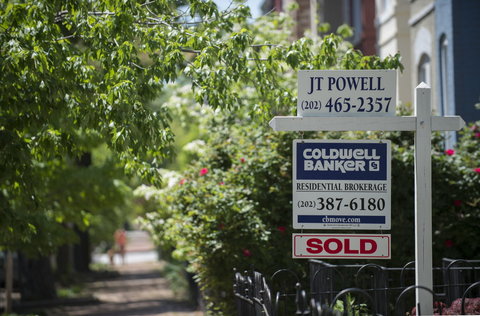 Agence France-Presse — Getty Images A home for sale in Washington, D.C.
Agence France-Presse — Getty Images A home for sale in Washington, D.C.
As the housing market continues its recovery, prospective home buyers in some areas may have found, much to their dismay, that the inventory of houses for sale is somewhat limited, and sellers are receiving multiple offers.
A recent analysis by the real estate site Zillow, for instance, found that while some improvement has occurred, the inventory of homes for sale nationally in April was down about 14 percent from the same time last year.
The National Association of Realtors, meanwhile, also reported a decrease in inventory in many markets compared with a year ago. Some markets saw drops of 20 percent or more, indicating “near record lows” of available homes.
Specifics vary by market, of course, and there are also some signs that the lack of inventory is easing this spring, as home values have risen, Zillow found. Rising values bring more sellers off the sidelines, putting more homes on the market. Many owners have been waiting to sell because their homes are still “underwater,” or worth less than their mortgage.
Mark Cenci, broker with ERA Martin Associates in Chillicothe, Ohio, said buyers need to be aware that the market is changing. Sometimes home shoppers are confused, he said, because there appear to be a lot of houses listed for sale, but many are actually under contract.
“They think there’s plenty of houses, and that they can find what they want and get a great price,” he said. But that’s not necessarily the case.
So what should a home shopper do, in a market where inventories are tight, and there may be competition for some homes?
Mr. Cenci recommended that if you are eager to buy and have found a home you really want, you make your offer as strong as possible — even if that means going a bit above the asking price. If you have time to shop around, you can be a bit more aggressive — that is, lower — in your offer. But, “If they need to move and they find house they love, they shouldn’t be afraid to make a good offer,” he said.
Another way to show a buyer that you are serious, and to set your offer apart from other buyers’, is to increase the amount of earnest money you put up with your offer. The money goes toward your down payment if your offer is accepted, and is returned to you if the seller declines your offer. (Of course, if your offer is accepted and you back out, you lose your earnest money. So again, it makes sense to up the ante only if you’re confident that you want the house.)
If you think there’s a chance you won’t go through with the purchase, he said, save everyone a lot of time and “don’t make the offer.”
It also makes sense to consider the type of mortgage you will use, according to ERA. While some buyers are attracted to F.H.A. loans because they typically require lower down payments, a conventional mortgage may be more attractive to a seller. That’s because the requirements for the condition of the property are often tougher for F.H.A. loans, so some sellers may be wary of being asked to make repairs before the sale can proceed. If you can swing a higher down payment, a conventional mortgage may help your offer.
In general, limiting the number of contingencies in your offer — whether they are related to financing, inspections or other conditions — will strengthen your offer, he said.
Are you in the market for a home? Have you had difficulty finding a house, or encountered competition for your chosen property?
Article source: http://bucks.blogs.nytimes.com/2013/05/16/buying-a-house-when-inventory-is-tight/?partner=rss&emc=rss







